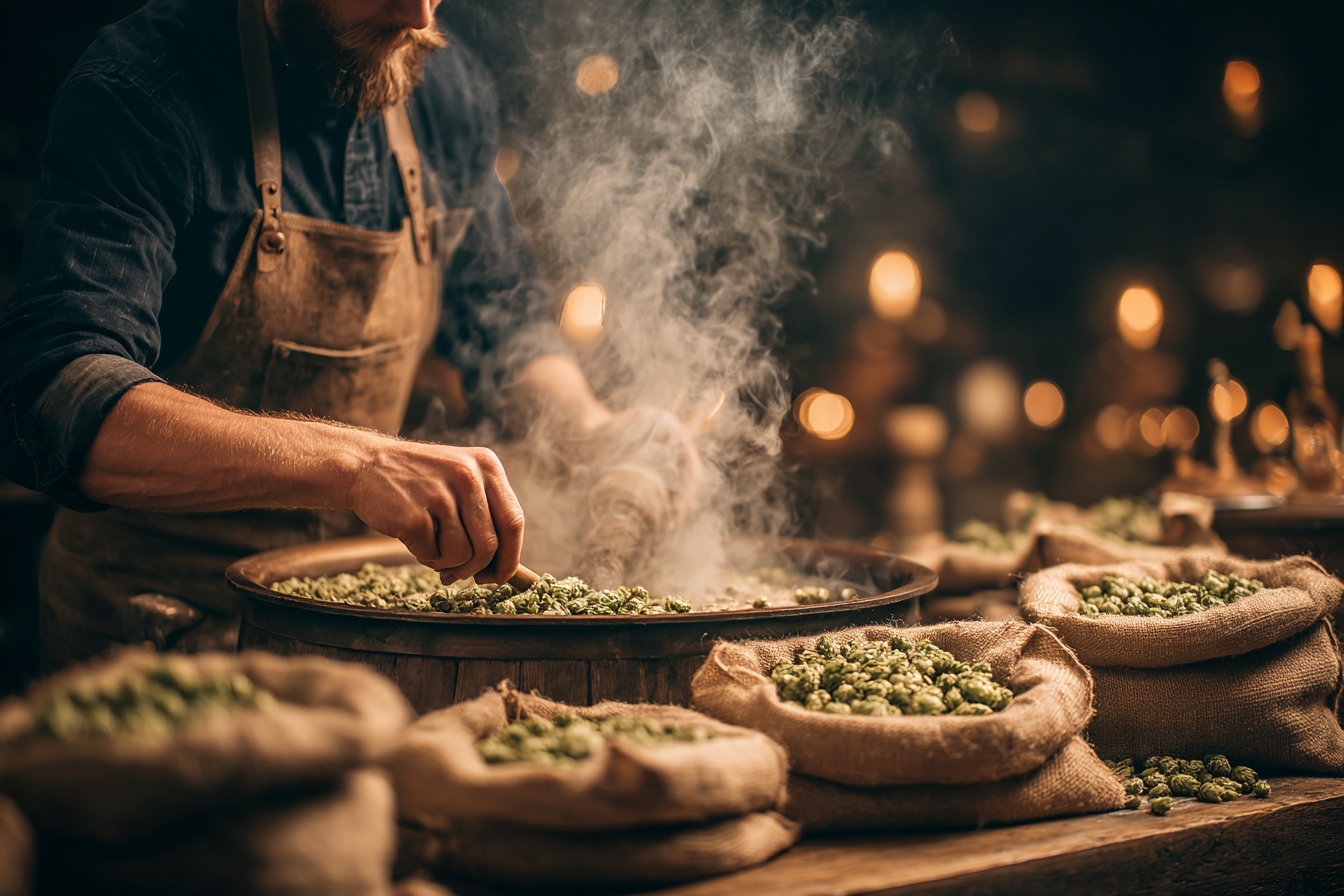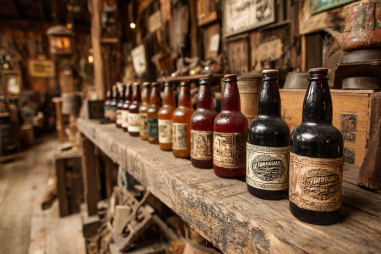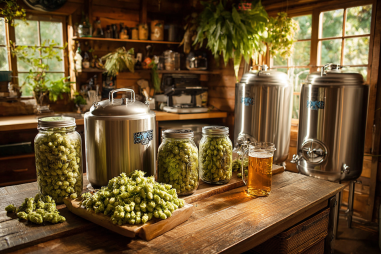Brewing American smoked beer at home is an exciting adventure that combines tradition, creativity, and a touch of smoky magic. Whether you’re a seasoned homebrewer or just getting your feet wet, mastering smoked beer brewing techniques opens the door to crafting rich, flavorful brews that celebrate the bold flavors of smoked malts. In this guide, we’ll dive deep into the process, helping you balance smoke intensity with malt character and walk you through the equipment and methods to make your smoked beer shine.
Introduction to Smoked Beer Brewing
Smoked beers trace their origins back to old European traditions where malted barley was dried over open flames or smoke, imparting robust smoky flavors to the beer. American smoked beers have taken this age-old technique and given it a modern twist, often emphasizing bold smokiness balanced by a robust malt backbone. These beers range from subtle smoke overlays in amber ales to intensely smoky flavors in darker stouts. The unique flavor profile comes primarily from smoked malt, which infuses the beer during brewing.
For homebrewers, smoked beers offer a chance to experiment with different smoky notes, malt combinations, and brewing techniques. They invite brewers to get hands-on with selecting smoked malts and managing the delicate balance between smoke aroma and other beer components.
Selecting and Preparing Smoked Malts
The cornerstone of any smoked beer is its malt. The choice of smoked malt dramatically shapes the character and smokiness of the final brew.
Types of Smoked Malts
- Beechwood-Smoked Malt: The classic option, especially popular in American versions of Rauchbier, offering a clean and subtle smoky flavor with hints of woodfire.
- Cherrywood-Smoked Malt: Imparts a fruitier, slightly sweeter smoke aroma, adding complexity.
- Pecan or Hickory-Smoked Malt: Provides a stronger, more assertive smoke character that can be ideal for darker, malt-forward beers.
- Applewood or Mesquite-Smoked Malts: Uncommon but interesting choices for homebrewers looking for unique smoky profiles.
When selecting malt, it is crucial to source it from reputable maltsters who maintain consistent smoking processes. Fresh malt also ensures that the smoke flavors remain vibrant and not overly aged or faded.
Preparing Smoked Malts for Brewing
Before brewing, examine your smoked malt carefully. Typically, it requires no special preparation beyond milling just like regular malt. However, it’s wise to use smoked malt in smaller quantities relative to the total grain bill at first, especially if you are experimenting. Starting with 10–20% smoked malt allows the smoke to be perceptible but not overwhelming.
Since smoked malts can be drier and fluffier than standard malt, adjust your mill gap or grain crush to achieve a consistent crush for optimal mash efficiency.
Controlling Smoke Intensity and Flavor Balance
The hallmark of a great smoked beer is the balance between smoky aromas and the malt character. Too much smoke can overpower the beer, while too little may make the smoke notes elusive.
Balancing Smoke with Malt Flavor
Here are key strategies for finding that sweet spot:
- Adjusting the Percentage of Smoked Malt: Start low, around 10%, and increase gradually in batches if you desire stronger smoke.
- Using Complex Malt Bills: Combine smoked malts with other flavorful base malts like Munich, Vienna, or caramel malts to add sweetness and depth that complements the smoke.
- Managing Hop Bitterness: Opt for moderate hopping. Excessive bitterness can clash with smoke and make the beer taste harsh.
- Controlling Mash Temperature: A higher mash temperature (around 154°F or 68°C) helps produce more dextrins, giving a fuller, smoother body that balances smoky sharpness.
Customizing Smoke Profiles
Smoke flavor exists in many varieties:
- Light to Moderate Smoke: Use gentle-smoked malts or smaller proportions.
- Heavy Smoke: Use more pronounced smoked malts or higher quantities, sometimes blending different smoked malts.
- Layered Smoke: Combine different wood-smoked malts to create complexity and a nuanced smoke aroma.
Brewing Equipment Essentials for Smoked Beers
While basic homebrewing equipment works well for smoked beers, certain tools and practices help manage the unique challenges of smoked malt brewing:
- Grain Mill: A reliable mill with adjustable gap helps crush the sometimes fluffier smoked malts evenly.
- Mash Tun with Good Temperature Control: Maintaining steady mash temps enhances malt flavor extraction and improves final beer balance.
- Fermentation Vessel with Airlock: To avoid unwanted oxidation, essential for preserving smoke aroma and flavor.
- pH Meter: Smoked malts can slightly alter mash pH; keeping your mash in the ideal pH range (5.2-5.6) is important.
- Water Adjustment Tools: Adjust water chemistry to avoid harsh mineral notes that might amplify smoke bitterness.
Additionally, thorough sanitation remains vital since smoky beers’ malt complexity can mask minor off-flavors but only to an extent.
Step-by-Step Brewing Process Guide
Here’s a practical guide to brewing your own American smoked beer at home.
Step 1: Formulate Your Recipe
- Start with a base malt like 70-80% 2-row pale malt.
- Add 10-20% smoked malt—adjust according to desired smokiness.
- Incorporate specialty malts like Munich or Crystal to add sweetness and body.
- Keep hops moderate; choose varieties with mild vegetal or earthy character like Willamette or Fuggle.
Step 2: Milling and Mash
- Mill your grains evenly.
- Mash at 150-156°F (65-69°C) for 60 minutes to balance fermentability and body.
- Test and adjust pH if necessary.
Step 3: Lautering and Sparging
- Drain the wort gently to avoid over-sparging, which can extract harsh tannins.
- Sparge with water at around 168°F (75°C) to rinse sugars without extracting unwanted flavors.
Step 4: Boil and Hop Additions
- Boil for 60 minutes.
- Add hops early in the boil for bitterness, and later additions for aroma.
Step 5: Cooling and Fermentation
- Rapidly cool wort to pitching temperature (usually 65-68°F).
- Pitch an appropriate American ale yeast strain.
- Ferment until complete, usually 1-2 weeks.
Step 6: Conditioning and Packaging
- Allow beer to condition to smooth out flavors and reduce harshness.
- Package as usual—bottle or keg.
Common Challenges and Troubleshooting Tips
Even experienced brewers can encounter hurdles while brewing smoked beers, but these tips can help navigate the typical pitfalls.
Issue 1: Overpowering Smoke Aroma
- Reduce the proportion of smoked malt.
- Use smoked malt from milder sources.
- Blend your smoked malt with neutral malts or increase specialty malt sweetness to balance.
Issue 2: Harsh or Medicinal Smoke Flavor
- Verify malt quality; some smoked malts can have phenolic off-flavors if poorly produced.
- Avoid high mash pH or excessive sparging temperatures that pull tannins.
- Ensure proper yeast health and fermentation control.
Issue 3: Cloudy or Hazy Beer
- Whirlfloc, Irish moss, or other clarifiers can be added during boil.
- Cold conditioning helps precipitate haze particles.
- Avoid excessive proteins from large adjunct or specialty malt inclusion.
Issue 4: Weak Smoke Flavors
- Increase the smoked malt amount gradually in your next batch.
- Use smoked malt from a reputable supplier known for strong flavor.
Perfecting Your American Smoked Beer Brew
Brewing American smoked beer at home is a rewarding way to blend traditional techniques with your own creativity. The key to success lies in choosing smoked malts thoughtfully, managing the mash and fermentation carefully, and balancing smoke with malt sweetness and hop bitterness. Experimentation is part of the journey—start with smaller smoke additions and adjust based on tasting results. With patience and practice, you’ll be crafting smoky masterpieces that delight your palate and impress fellow beer lovers.
So fire up your brew kettle, gather your malts, and embrace the smoke—your perfect American smoked beer is just a few brewing sessions away!







